On this page, I’m going to show you how to build a flight case with an L-shaped lid. Specifically, I want to use my flight case as a pedalboard. I’m namely a guitarist and when I’m on stage, I like having all my pedals for special effects at arm’s or rather leg’s length. Now, most people will just make a pedalboard with a normal lid, i.e. a standard flight case with a very narrow bottom where the pedals are and then a taller lid. You can make this just like a normal bog-standard flight case. It’s nothing special. If you want to do this, please see the general step-by-step flight case assembly instructions.
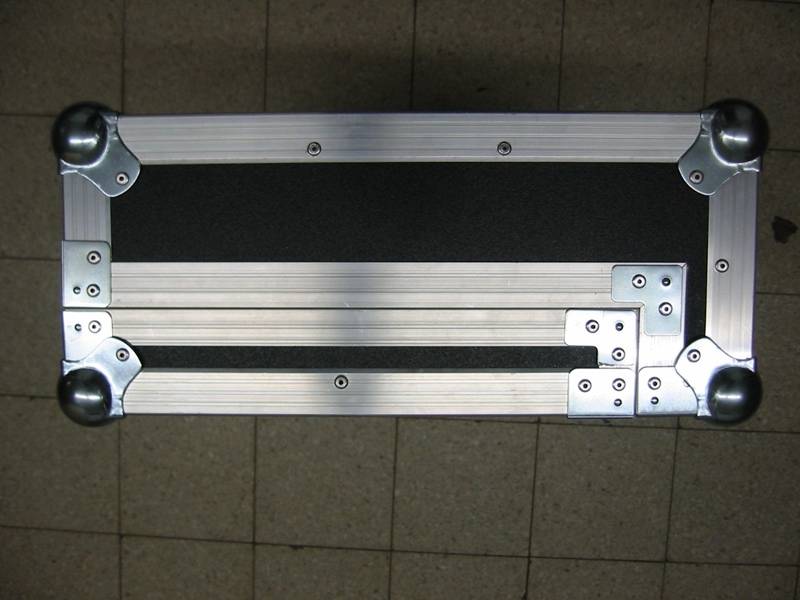
As I’m often lead guitarist and singer at the same time, though, I like having my pedals very easy to reach. So that’s why I’ve chosen to work with an L-shaped lid. That way, the front of my pedalboard will never be in the way. Making a flight case with an L-shaped lid will of course take a bit more time than a normal one, but I like a challenge.
I've started by putting together my wooden box again along the method I’ve shown you. So I’ve just made a closed wooden box with glue and nails, with the exact measurements I want (64.5 x 41 x 17.5 cm on the outside). I’ve taken into account the pedals that have to be fitted on the outside and made sure there is enough room for the power supply and a little to spare, just in case I buy some more pedals in the future (guitarists are not easily contented).


The main difference between building a flight case with a normal lid and a flight case with an L-shaped one is that for the second kind, you have to saw an extra centimetre off when you’re cutting your ‘wooden box’ in two. That’s why I’m going to mark the edge of the line I’m going to saw with masking tape. Actually I’m sticking two lines of masking tape all around to mark where I’m going to saw and I’ve got everywhere exactly 1 cm between the two strips of masking tape. I’ll saw the extra centimetre out with a fretsaw later. So you need to saw all around the box twice. The centimetre you’re going to take off will be filled later by the lid locations that will be fitted over the edges.
For the rest everything goes exactly the same as in our general step-by-step flight case building instructions. First saw the lid locations to size and fit them in. You need to mitre the lid locations for this case too, because you’re working with an L-shaped lid. And this is the result, from several angles. Click on the photos to enlarge.




I worked with medium ball corners, two medium butterfly latches, two detachable hinges, eight large corner braces and one large strap handle. As the bottom part is quite narrow and I prefer using large corner braces instead of small ones, two of the holes on the corner braces will end up under the ball corners and won’t need fixing with rivets. If I were to use rivets in the covered-up holes as well, the entire thing would end up more uneven and the ball corner would fit less well onto the case.
Furthermore I also used 8 rubber feet. 4 on the bottom (so the pedalboard doesn’t slide away on stage) and 4 along the narrow side (in case I want to carry the case and put it down).
Tips for teenuts
The photo below on the left shows how the lid locations on the L-shaped lid fit nicely. You could fix the pieces of lid location on the side of your flight case by putting in rivets, but I don’t like doing this. I think rivets straight into lid locations should be avoided as much as possible, because it doesn’t look professional. Of course it’s a matter of personal opinion, but I prefer working with L-brackets, as that’s what they’re for anyway. You can see how this looks on the next two photos.


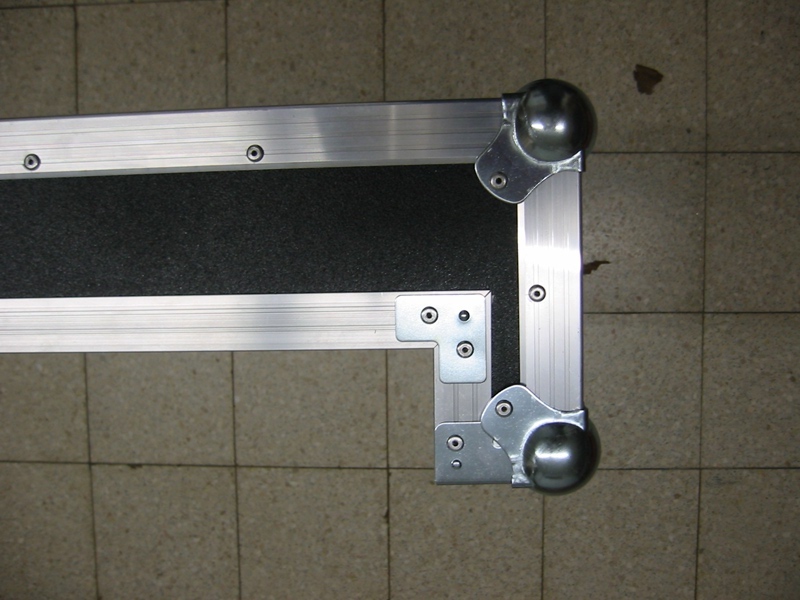
Now we’ve only got the inside of the case left to deal with. I’m making a small, wooden box on my pedalboard to house the power strip and my power supply (adapter). This way I’ve also made part of my pedalboard a bit higher, so I can distribute my pedals over two levels (tiers).



The photos below show the result I want to get in the end, so you can envisage it a bit better.

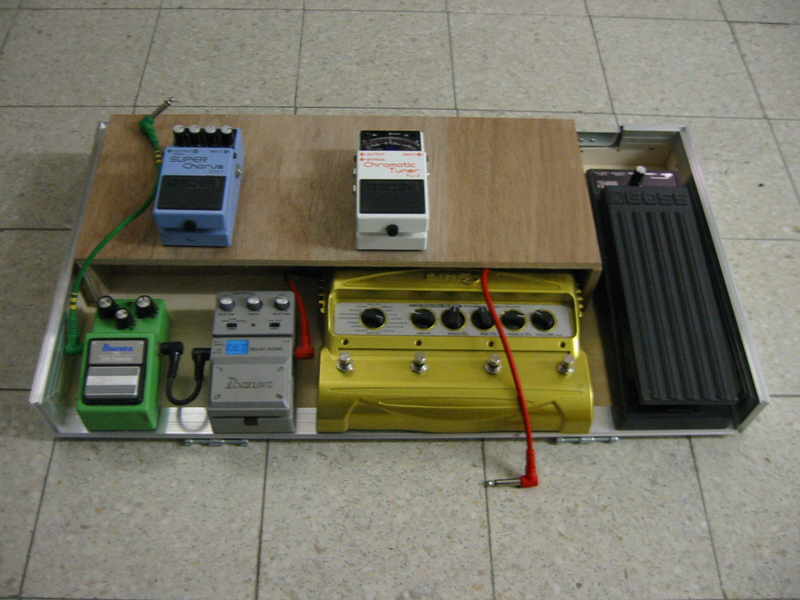
To get there, I need to take off the pedals again first and line the inside of my flight case with black, velvety fabric (very soft and very chic!). I’ll be covering the inside of the lid with soft eggbox foam. This’ll make sure the pedals will stay in position more or less during transport. I’m using spray adhesive from the flightcase-brico.com web shop to stick on the lining (the velvety fabric and the foam).
And this is the result.
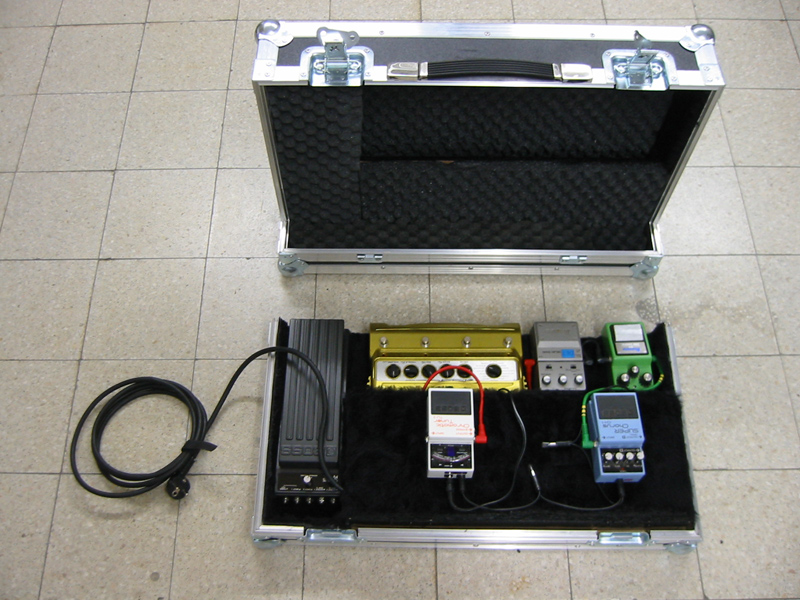


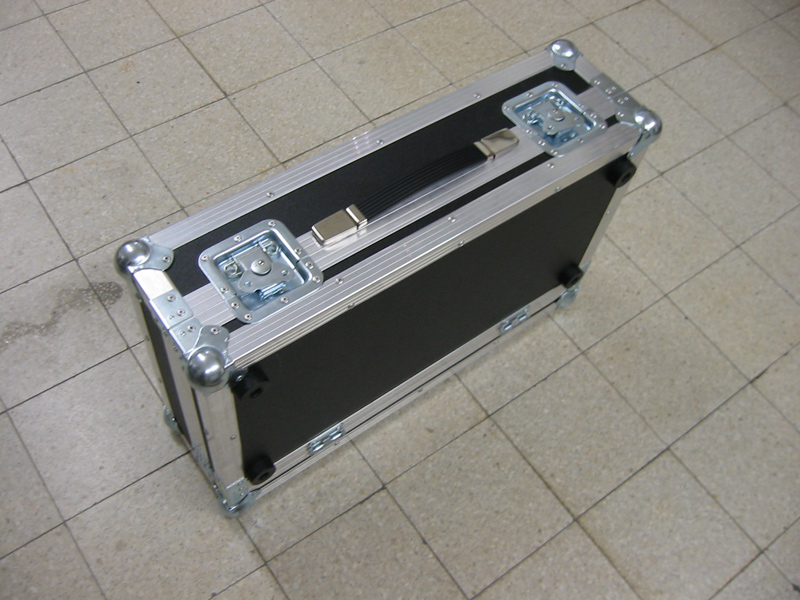
Any questions? Don't hesitate to contact us!
